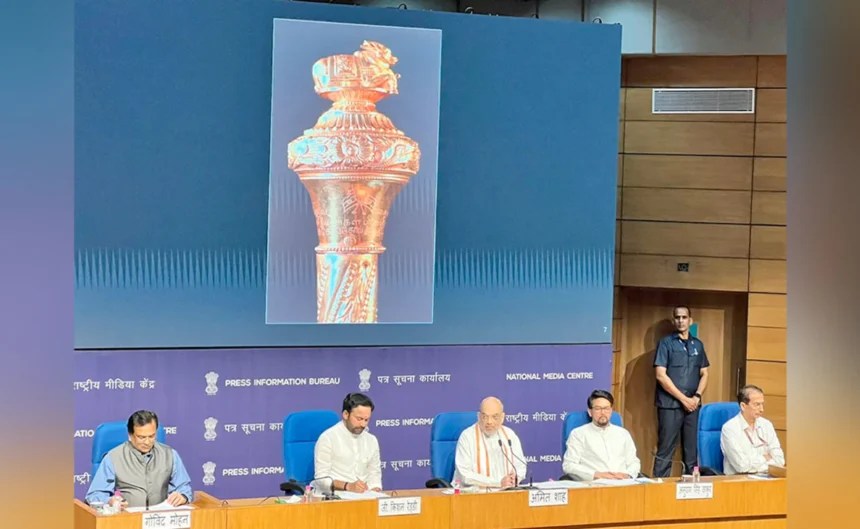In a significant move that resonates with the values of righteous governance, India prepares to witness a historic moment as the sceptre named ‘Sengol’ finds its place in the newly constructed Parliament building. The decision to include this historical artifact from Tamil Nadu serves as a poignant reminder of the responsibility entrusted to the nation’s leaders to uphold principles of justice and integrity. Union Home Minister Amit Shah, along with other Union ministers and Bharatiya Janata Party (BJP) leaders, unveiled this news on Wednesday, generating a sense of anticipation and pride among the citizens.
Earlier on the same day, Amit Shah made the momentous announcement that the revered sceptre, once received by India’s first prime minister Jawaharlal Nehru to symbolize the transfer of power from the British, will be prominently displayed in the new Parliament building. The much-anticipated inauguration of the building is scheduled to take place on May 28, with Prime Minister Narendra Modi presiding over the ceremony.
For years, the historical sceptre had been housed in a museum located in Allahabad, where it remained an object of historical significance. However, its relocation to the new Parliament building signals a shift in purpose and underscores the importance of embracing and commemorating the nation’s rich heritage.
The inclusion of the sceptre ‘Sengol’ in the new Parliament building stands as a testament to India’s commitment to righteous governance and the preservation of its cultural legacy. By bringing this artifact into the heart of the country’s political hub, the government aims to foster a sense of collective responsibility among its representatives and leaders. The sceptre serves as a tangible reminder of the weight of their duty to uphold the values of justice, fairness, and ethical governance for the betterment of the nation and its people.
The decision to incorporate the sceptre in the new Parliament building demonstrates the government’s recognition of the historical significance of Tamil Nadu’s culture and heritage. By honoring the contributions and traditions of different regions, the move symbolizes the unity and diversity of India, reinforcing the nation’s commitment to inclusivity and respect for its diverse cultural fabric.
The anticipation surrounding the inauguration of the new Parliament building has been growing, as citizens eagerly await the momentous occasion. The inclusion of the sceptre ‘Sengol’ will undoubtedly add an extra layer of historical and cultural importance to the event. It signifies a collective step forward in acknowledging and valuing India’s rich past while charting a course towards a prosperous and progressive future.
As Prime Minister Narendra Modi prepares to inaugurate the new Parliament building on May 28, the presence of the sceptre ‘Sengol’ will serve as a powerful symbol. It will remind all those who enter the hallowed halls of the responsibility they bear as custodians of the nation’s democratic ideals and principles. The historic moment will be etched in India’s history, serving as a constant inspiration for leaders to govern with righteousness, integrity, and the best interests of the people at heart.
The installation of the sceptre ‘Sengol’ in India’s new Parliament building represents a significant milestone in the nation’s history. It serves as a reminder to the country’s leaders of their responsibility to uphold righteous governance, while honoring India’s diverse cultural heritage. The inclusion of this historical artifact reflects the government’s commitment to preserving the past and charting a path towards a brighter future. With the inauguration of the new Parliament building drawing near, the stage is set for a historic moment that will inspire and shape the course of India’s governance for generations to come.




